7 Day Letter Before Action Template for Legal Disputes
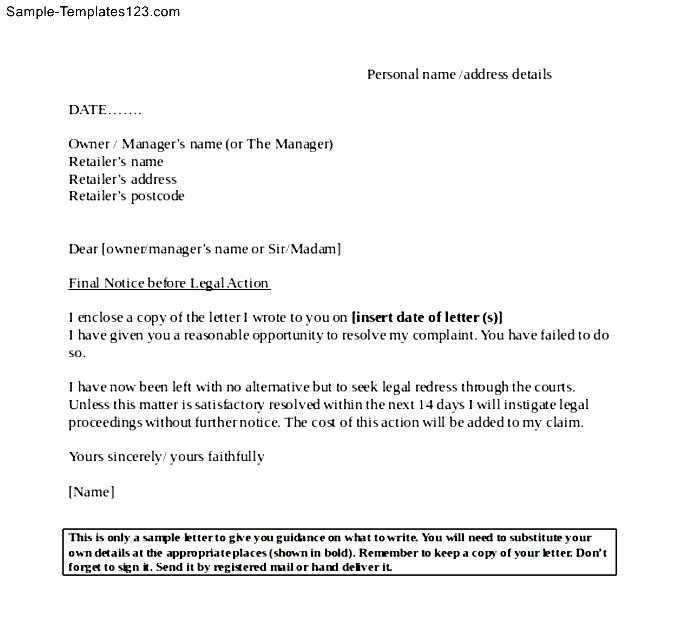
When facing unresolved disputes or unpaid debts, it is crucial to take the necessary steps to resolve the issue. One of the first legal actions individuals can take is to send a formal notice requesting a resolution within a set timeframe. This document acts as a final reminder to the recipient before escalating matters further.
Drafting a well-structured notice is vital for ensuring that your communication is clear, professional, and legally valid. The notice must include essential details such as the nature of the issue, the expected resolution, and a clear deadline. It serves as an opportunity to outline the potential consequences if the matter is not addressed in the specified period.
Understanding how to create and use such notices effectively can significantly increase your chances of resolving disputes amicably and avoiding lengthy legal procedures. By adhering to the right format and following legal guidelines, you ensure that your warning holds weight in a potential court scenario.
Importance of a 7 Day Letter
In the world of business and legal matters, it is crucial to establish clear communication regarding unpaid obligations. When a party fails to meet their commitments, taking proactive steps is essential to resolve the situation effectively. A formal notice serves as an essential reminder and can play a pivotal role in encouraging a prompt response from the recipient.
Prompt communication is key to resolving disputes and preventing further complications. Sending a formal request signals seriousness and provides an official record of your attempts to seek a resolution. It acts as a formal request to comply within a specified period, creating a sense of urgency for the recipient.
Additionally, proper documentation of such requests can be valuable if the matter escalates to legal proceedings. Having a well-documented history of attempts to resolve the issue increases your position in any future negotiations or claims.
Purpose of Sending a Letter Before Action
In many cases, prior to taking legal steps, it is important to inform the other party of the intent to pursue further measures if certain conditions are not met. This formal communication serves as a final warning, urging the recipient to settle or respond within a given timeframe. Its main objective is to facilitate a resolution without the need for court involvement.
Prevent Escalation
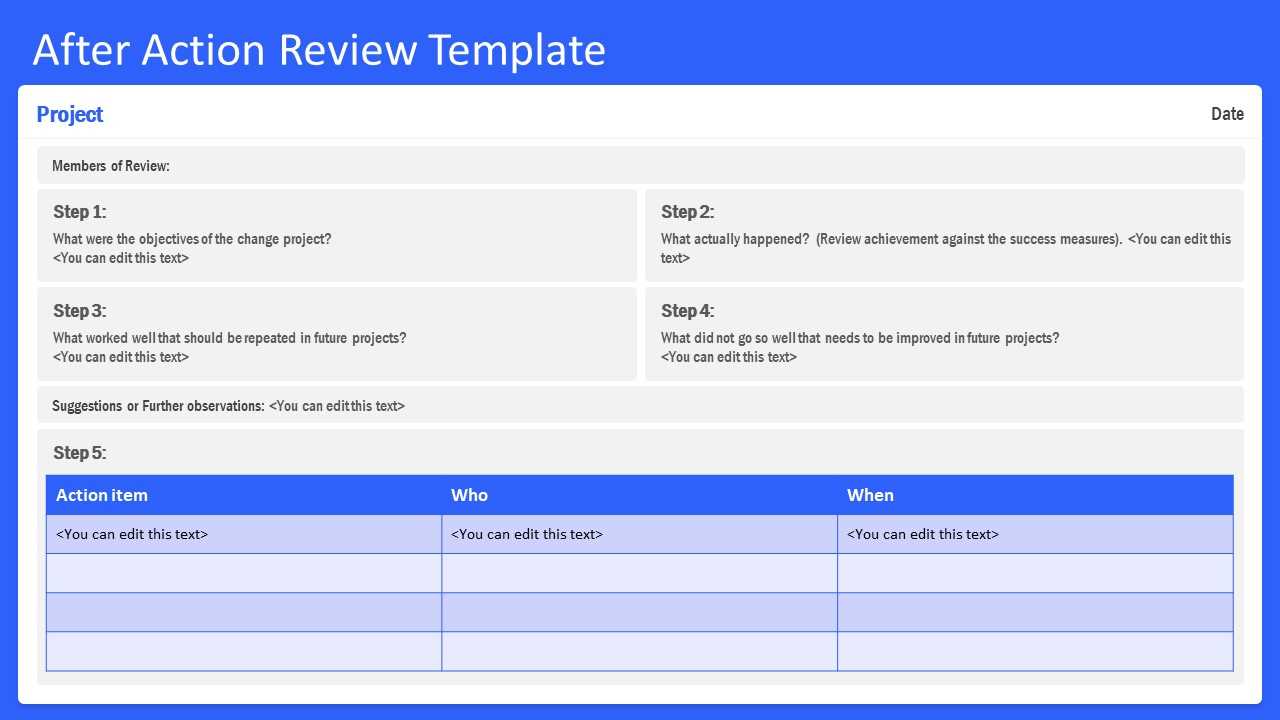
The primary goal is to prevent a situation from escalating to more formal and expensive legal procedures. By clearly outlining the issue and the consequences of non-compliance, it encourages the other party to address the matter promptly, potentially avoiding unnecessary disputes.
Establish Legal Standing
Another key purpose is to establish a formal record that you have made efforts to resolve the matter amicably. This can be vital if the situation proceeds to court, as it demonstrates your commitment to resolving the issue fairly and responsibly before initiating more serious legal actions.
Essential Information for Your Template
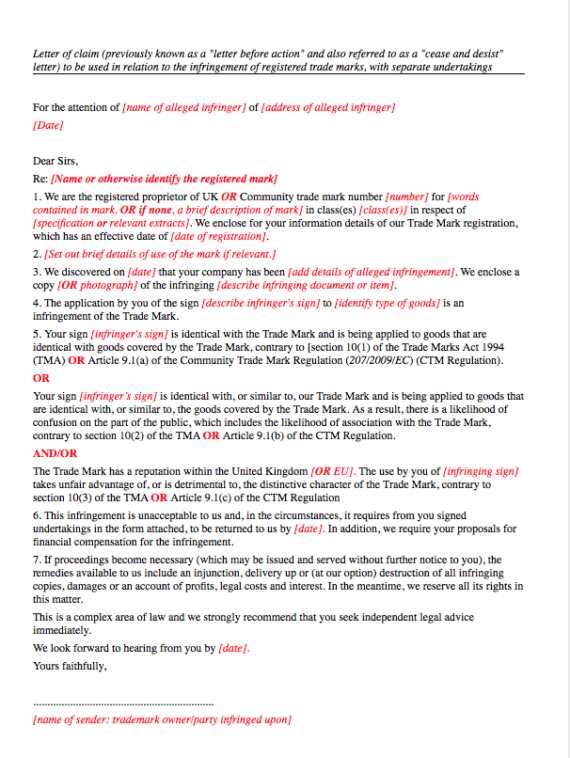
When preparing a formal request for resolution, it is crucial to include specific details to ensure clarity and effectiveness. Providing the necessary information allows the recipient to fully understand the issue, the expectations, and the consequences of non-compliance. Below are the key components to consider when crafting such a document.
Key Elements to Include
- Full Identification – Clearly state the names and contact information of both parties involved.
- Clear Description – Describe the issue in detail, including any relevant agreements or transactions that led to the dispute.
- Deadline – Specify the time by which the recipient must respond or resolve the matter.
- Consequences – Clearly outline the actions you will take if the situation is not addressed within the provided timeframe.
- Reference to Previous Communication – If applicable, include references to earlier attempts to resolve the issue.
Formatting and Professional Tone
- Formal Language – Ensure the tone is professional and respectful throughout the message.
- Concise Content – Avoid unnecessary information that may confuse or distract from the main point.
- Clear Structure – Organize the information logically, with headings and bullet points if necessary for readability.
Steps to Customize the Template
When preparing a formal document to address an issue, it is important to personalize it to suit the specifics of your case. Customizing the structure allows you to clearly present the problem, specify your expectations, and outline the next steps effectively. Here are the steps to modify the general structure to fit your particular needs.
Gather Relevant Information
Before making any changes, ensure you have all the necessary details about the issue at hand. This includes names, addresses, transaction details, and any prior communication that is relevant. Accurate information will make the document more effective and clear.
Modify the Structure and Content
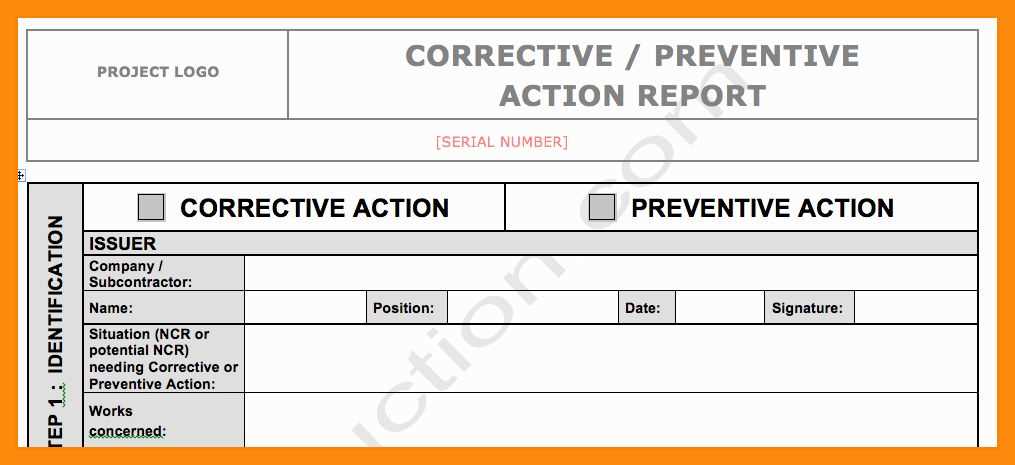
- Personalize the Introductory Section – Adjust the introduction to reflect the nature of the dispute or request, providing a brief but clear explanation of the issue.
- Specify the Desired Outcome – Clearly state what resolution you are seeking, including any actions or changes the other party must take.
- Include Deadlines and Consequences – Customize the timeline for response and outline the consequences of non-compliance based on your needs.
- Tailor the Tone and Language – Depending on your relationship with the recipient, adjust the tone to be either more formal or less formal while maintaining professionalism.
Understanding Legal Consequences and Rights
When engaging in formal communication to resolve a dispute, it is crucial to understand the potential legal implications for both parties involved. This type of communication sets the stage for any future actions and can have significant consequences if ignored. It is important to be aware of your rights and responsibilities in the process, as well as the legal steps that could follow.
Key Legal Implications
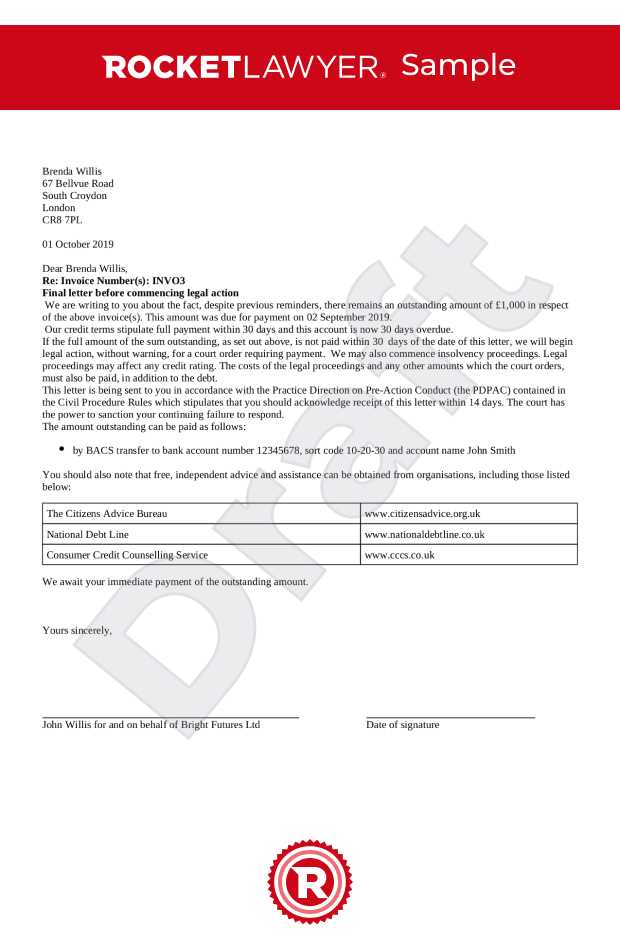
| Consequence | Explanation |
|---|---|
| Escalation to Legal Proceedings | If the issue remains unresolved, the next step could involve court proceedings or other legal actions. |
| Possible Financial Penalties | Failure to comply may result in monetary fines or judgments imposed by a court. |
| Impact on Reputation | Non-compliance can harm the reputations of businesses or individuals, affecting future dealings and trust. |
Your Rights and Protections
It is essential to recognize your rights when seeking a resolution. You are entitled to pursue legal action if the other party does not meet their obligations. However, it is also important to understand that the recipient has the right to dispute the claims, which could lead to a legal defense or negotiation process.
How to Handle Responses to the Letter
Once you have sent a formal notice, it is important to prepare for the possibility of a response. Whether the reply is positive or negative, knowing how to handle the communication effectively can help you resolve the matter efficiently. It’s crucial to stay professional, consider the other party’s position, and decide the best course of action moving forward.
Types of Responses
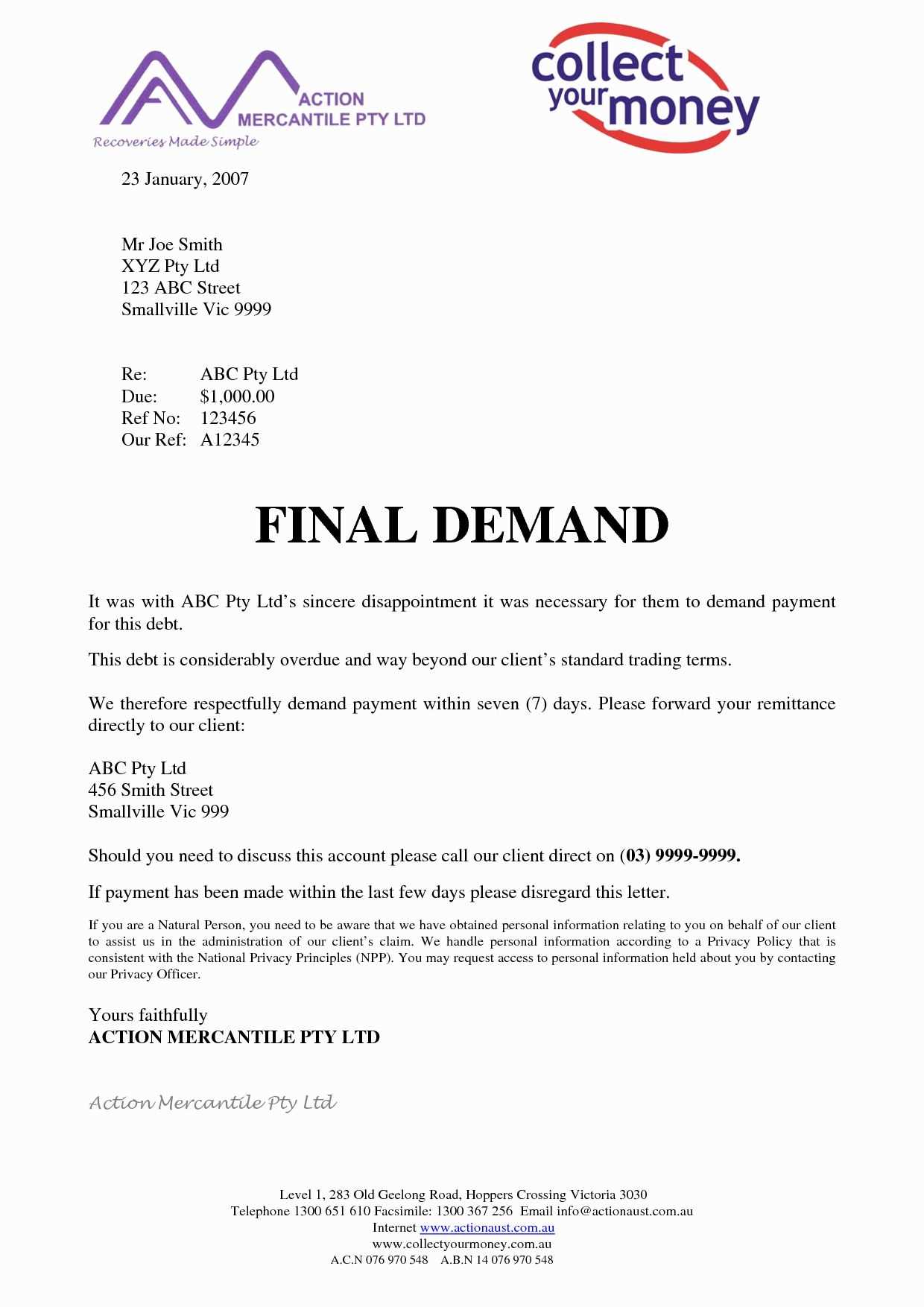
- Agreement to Resolve – If the recipient agrees to meet your demands or negotiate a solution, be sure to confirm the terms in writing and follow up to ensure that the agreement is upheld.
- Partial Agreement – In cases where the recipient agrees to some aspects but not all, assess whether the compromise is acceptable or if further negotiation is necessary.
- Dispute of Claims – If the recipient disputes the issue or refuses to comply, you may need to gather evidence and prepare for further legal steps.
- No Response – If there is no response within the given timeframe, you must decide whether to escalate the situation to legal proceedings.
Next Steps Based on the Response
- Evaluate the Agreement – Ensure any terms agreed upon are clear and legally binding. Confirm dates, responsibilities, and expectations.
- Prepare for Legal Action – If the response is unsatisfactory or non-existent, begin preparing for the next stage, such as legal action or further negotiation.
- Seek Professional Advice – Consulting with a legal professional can help you navigate any disputes and understand your options moving forward.